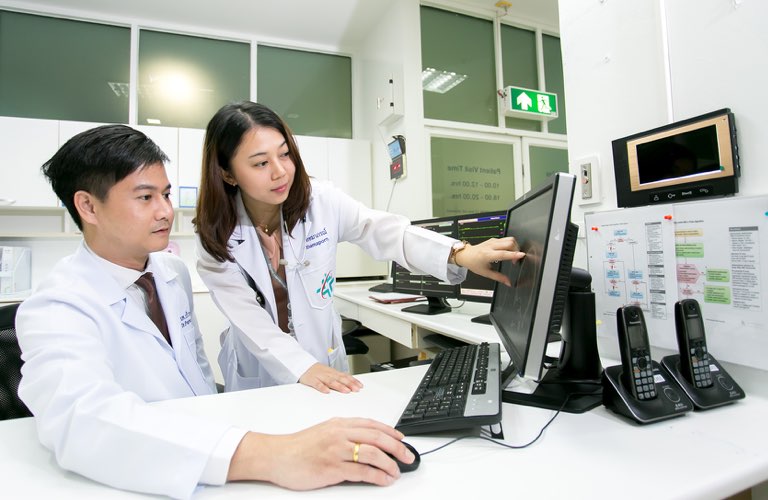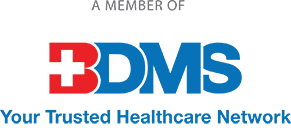Preventing a stroke
Having a stroke can be deeply debilitating—yet there are many ways you can prevent a stroke and minimize its effects. “In the present time, there are so many easy food options available that can compromise our health, and many people eat these without thinking about it,” says K. Yuttana Petmunee, a physical therapist at Bangkok Hospital Siriroj in Phuket. “We also have lots of stress from work, and from many factors, and this can also increase the risk of stroke, so right now we have lots of stroke patients in our hospital as well as around the world.”

There are two major types of stroke: ischemic and hemorrhagic. Most strokes are ischemic, occurring when a clot or obstruction cuts off the blood supply to the brain. Around 10 to 20 percent of strokes are hemorrhagic, occurring when a blood vessel bursts open and there is bleeding in the brain. There are steps you can take to avoid both types of strokes and experts say that 80 percent of strokes are preventable.
1. Lower your blood pressure
High blood pressure is the leading cause of strokes, so if you have high blood pressure, talk to your doctor about how to get it under control. At the Siriroj Wellness Clinic, experts can help you with a diet and exercise plan that will bring your blood pressure to healthy levels.
2. Don’t smoke
Smoking lowers the levels of oxygen in your blood and doubles your risk of stroke.
3. Monitor your LDL cholesterol
Too much LDL cholesterol can clog your arteries and trigger a stroke
4. Prevent and manage diabetes
Diabetes is also linked to stroke, so a program to prevent and manage diabetes will also help prevent a stroke.
5. Exercise
Working out for 30 minutes a day, five days a week, will reduce your risk of obesity, high-LDL cholesterol, and diabetes, which, in turn, minimizes your stroke. “Cycling is a great exercise because you get the cardio benefits of jogging but without the high risk of knee arthritis,” says K. Yuttana.
He also recommends regular stretching to increase muscle flexibility and reduce the chance of injury.
6. Maintain a healthy weight
Talk to a physician about the weight range to aim for and the strategies to obtain that goal.
7. Limit your consumption of alcohol
Drinking too much can raise your blood pressure and cause an irregular heartbeat.
8. Get tested for atrial fibrillation
If you have this form of irregular heartbeat, it could cause clots to form in your heart, so talk to a doctor about managing your condition and lowering your risks.
9. Check your sleep habits
If you have a loud, persistent snore, it could be sleep apnea, a condition which limits your oxygen, boosts blood pressure and is associated with instances of strokes.
10. Eat a healthy diet
Avoid salty foods, saturated fats, and meat. Go for big helpings of fresh fruits and vegetables.
11. Stay calm and carry on
Research shows that stress can produce extra white blood cells, which can cause your arteries to become inflamed. Regular exercise, mindful and meditation can help relieve stress.
Minimizing the impact of a stroke
Once you’ve suffered from a stroke, the impact it has on your body and mind is linked to how quickly you can make it to the hospital, so it is extremely important to go immediately upon noticing stroke symptoms. “If you feel numbness in your limbs, fingers, feet or toes, or you feel weak, or your tongue feels thick and you struggle to speak, you need to come directly to the hospital,” says K. Yuttana. “We can provide treatment and medication that will ensure the stroke does the least possible damage, but if you come very late, like after three or four hours after the stroke occurs, there is a high likelihood that the stroke will be severe.” A severe stroke can result in paralysis, impaired vision, memory loss, speech problems and serious weakness.
Move F-A-S-T
If you think you or a loved one may be suffering from a stroke, use the National Stroke Association’s easy-to-remember acronym as a quick test.
- F: Face. Ask the person to smile. Does one side of the face droop?
- A: Arms. Ask the person to raise both arms. Does one arm drift downward?
- S: Speech. Ask the person to repeat a simple phrase. Is their speech slurred or strange?
- T: Time. If you observe any of these signs, call emergency services immediately. If you are in Phuket, you can dial the Siriroj Emergency Center for ambulance services: 076-210-935.
